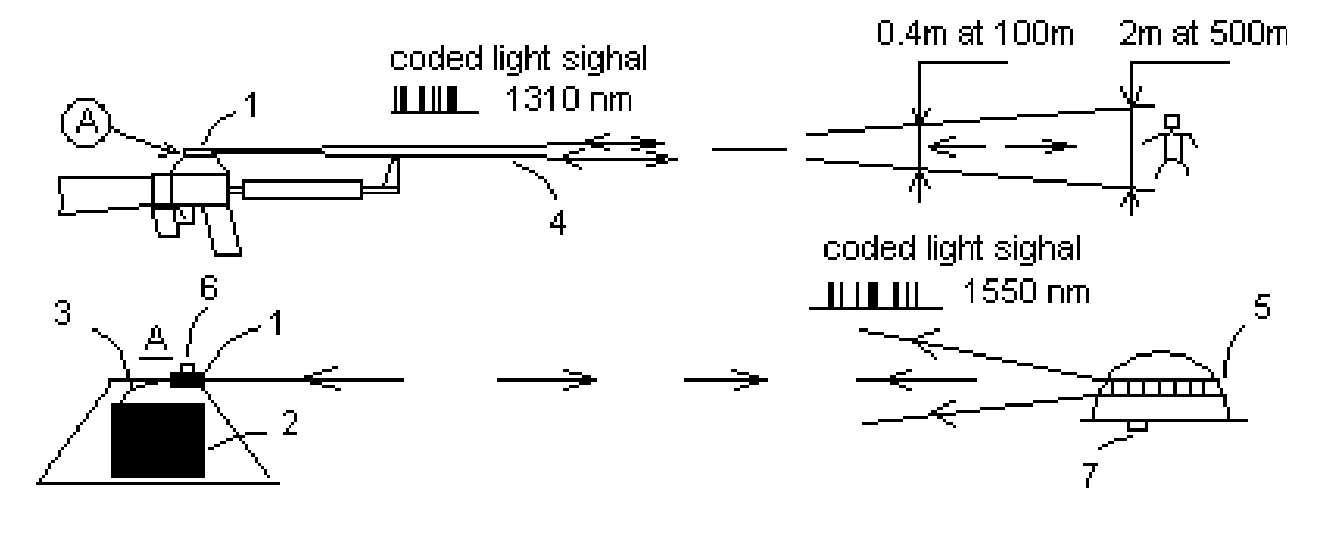Cost-effective friend-or-foe (IFF) combat infrared alert and identification system (CID)
- Summary
- Abstract
- Description
- Claims
- Application Information
AI Technical Summary
Benefits of technology
Problems solved by technology
Method used
Image
Examples
Embodiment Construction
[0028] The schematic diagram of IFF system of the present invention is depicted in FIG. 1.
[0029] Here, a small arm, such as M-16 assault rifle is equipped with an optical request unit-interrogator, which comprises a small graded-index cylindrical lens 1 mounted (attached) on the sight of the rifle and optically connected to an optical-electronic unit 2 via optical fiber 3. This request unit sends optical coded signal, which is received by an optical-electronic response unit-transponder 5 which a friendly target—a soldier—is equipped with. When this optical signal is received, the transponder 5 sends a coded optical response signal to the request unit; this signal that reaches the interrogator and, being decoded, activates the simple optical alarm signal 6 (just a flashing red LED mounted on the sight together with the lens 1) telling the shooter that “it is a friendly target”. Also, the optical signal received by the transponder 5 simultaneously activates a distinctive sound signal...
PUM
 Login to View More
Login to View More Abstract
Description
Claims
Application Information
 Login to View More
Login to View More - R&D
- Intellectual Property
- Life Sciences
- Materials
- Tech Scout
- Unparalleled Data Quality
- Higher Quality Content
- 60% Fewer Hallucinations
Browse by: Latest US Patents, China's latest patents, Technical Efficacy Thesaurus, Application Domain, Technology Topic, Popular Technical Reports.
© 2025 PatSnap. All rights reserved.Legal|Privacy policy|Modern Slavery Act Transparency Statement|Sitemap|About US| Contact US: help@patsnap.com



